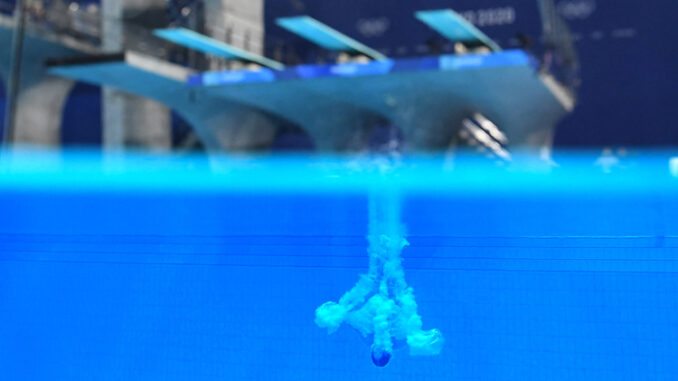
Summer is the perfect time to splash around in a swimming pool. It is fun to see who can make the biggest splash. Cannonballs create huge splashes. A cannonball is done by jumping as high as possible while pulling your knees to your chest, forming a ball. When your balled-up body hits the surface of the water, it creates a hole. Water that was pushed aside rushes back to fill in the hole, creating a splash. The bigger the hole, the bigger the splash! In the sport of diving, one of the ways athletes earn their score is by making the smallest splash possible. The smaller the splash, the better the score. To achieve this goal, a diver will attempt to perform a rip entry dive. A rip entry dive is executed by entering the water so quickly, and so vertically, that there is hardly any splash.
The success of the nearly splashless, rip entry dive depends on the move divers make after they enter the water. A quick turn underwater minimizes the splash above water. Divers bend their bodies at the waist rather than continuing deeper into the pool. The quick turn creates an air cavity underwater that prevents the splash from ever forming. The only splash results from initial contact. Scientists are interested in this move. Not only does it create a small splash, but it also reduces the impact felt by divers jumping from high heights. Research findings could help with splashdowns for returning space missions or the dropping of submarine drones into the water without making a splash.
What Do You Think? How could scientists use the splashless dive to assist submarine drones? Why is it important for submarine drones to not make a splash?
Reading Response Click on this link to respond to the reading. Print out the response page or ask your teacher for guidance.
Photo Credit: FRANCOIS-XAVIER MARIT / Contributor/Getty Images



